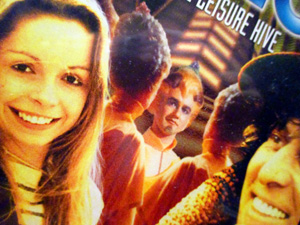The Leisure Hive
“Despair is the death of hope, and all our hope died years ago.” – Mena
 This story is usually heralded as a major shift in Doctor Who with the arrival of John Nathan-Turner as producer and a new focus on production value and showmanship. In some respects this is true—you can definitely tell that more care and budget has been put on the creation of the landscape of Logopolis, the holographic videophone, and the elaborate hair and make up for the Argolins. (Not so much the Foamasi?) He boldly revamped the opening them music and introduction, changed the Doctor’s iconic costume, and—perhaps most importantly–wanted to move the show away from some of the silly humor that the previous producer Graham Williams had introduced as
This story is usually heralded as a major shift in Doctor Who with the arrival of John Nathan-Turner as producer and a new focus on production value and showmanship. In some respects this is true—you can definitely tell that more care and budget has been put on the creation of the landscape of Logopolis, the holographic videophone, and the elaborate hair and make up for the Argolins. (Not so much the Foamasi?) He boldly revamped the opening them music and introduction, changed the Doctor’s iconic costume, and—perhaps most importantly–wanted to move the show away from some of the silly humor that the previous producer Graham Williams had introduced as
All that said, the story itself gets lost in the shuffle. I could never really understand what was going on as a kid. Even seeing it as an adult, I’ve had to watch it a few times to appreciate certain parts because there are several threads of conspiracy all going on at the same time. I do like some of the world building here with the history of Argolin war and their odd physiological progression of aging following it. Even better is how the script explores the psychological effects upon the survivors and their move towards making an intercultural center to remember and avoid the horrors of war. The pressure that Pangol feels to be the future of his people, and how that leads him back to the idea of conquest rather than peace, is also quite interesting but unfortunately doesn’t come through as well as I would have liked in the presentation. (There’s a nice aside about nuclear war: “It won’t be habitable for three centuries.” “Really? Why, how long did the war last?” “Twenty minutes.” (genuine shock) “As long as that!”)
Part of the difficulty in following the plot is not due to the storyline, however, but rather due to some bad direction and editing where things happen in such close up that you can’t see it. An example of this is the cliffhanger reveal of the rogue Foamasi with its multiple jump cuts (many of which don’t match) or all the action inside the machine. At other times, reactions are just way to overblown like the opening shot on Brighton—Romana’s blood-curdling scream at K-9 going to near the water is far too much. (Also, is the pull back view of the Doctor and Romana on the beach supposed to be the Black Guardian viewing them from above? The shot doesn’t make sense otherwise but this is not at all stated if so.) It’s odd that this is such a problem since other aspects of the story seem wonderfully thought out and shot (including some tracking shots and the foreground close-up of Pangol’s tete-a-tete and Brock with Mena blurred in the background.)
Best (or worst) unsettling moment:
The strange dropping off of the nodules on the head of the Argolins as they died unnerved me as a kid for whatever reason.
Retrofit:
Do we at last a possible explanation for the “old” Tom Baker we see in modern Doctor Who? Maybe he’s pulled out of time for a bit at this point in the story which is why we encounter him aged?
Regrets:
Unfortunately, there is a lot of empty drama in this story. Reaction shots are big but the establishing events for such reaction are often not well shown or even happen off camera. It doesn’t build much tension. It kind of seems that they were much more interested in focusing on the “cool” technology of being able to manipulate and copy video images (so super dated now!) that they didn’t try to make much of the scene outside of that.
